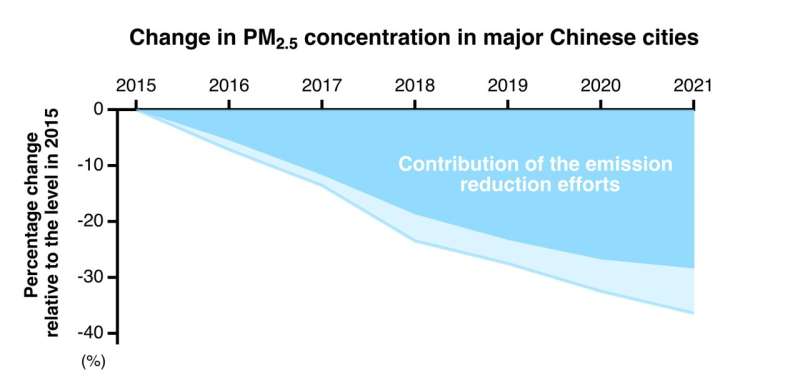Introduction

A new study has been conducted to understand whether the recent changes in China's air quality were driven by meteorological influences or air pollutant emission reduction efforts. It was led by Prof. Yinchang Feng from the College of Environmental Science and Engineering at Nankai University.
China's actions on air pollution
Over the past decade, substantial efforts have been made in China to curb air pollutant emissions. The implementation of two well-known and stricter nationwide Clean Air Actions—the "Air Pollution Prevention and Control Action Plan" (commonly known as the "Ten Measures") from 2013 to 2017, and the "Three-Year Action Plan to Win the Battle for a Blue Sky" (commonly known as "Blue Sky Battle") from 2018 to 2020—has played a pivotal role in this improvement.
These actions, issued by the State Council of China, aimed to reduce ambient PM2.5 mass concentration in key regions to target levels, and were supported by a series of policy and control measures. Through determined clean air actions, the nation has achieved a remarkable transformation in the state of its air pollution, resulting in cleaner air for its populace.
China has witnessed a remarkable improvement in ambient air quality, as evidenced by the consistent decrease in the concentrations of major air pollutants and the number of hazy days. In addition to anthropogenic emissions, weather conditions also regulate the variations of air pollution, especially in short-term timescale.
Details of Blue Sky Battle
The State Council has released a three-year action plan to win the battle for a blue sky, in a bid to improve air quality.
It was aimed at reducing emissions of major air pollutants and greenhouse gases, seeing a marked drop in the density of PM 2.5, and decreasing the number of seriously polluted days.
By 2020, emissions of sulfur dioxide and nitrogen oxides should decline at least 15 percent from 2015 levels, while cities with low air quality standards should see their PM 2.5 density fall at least 18 percent, according to the plan.
The rate of days with good air quality should reach 80 percent annually, and the percentage of heavily polluted days should decrease by 25 percent or more from 2015 levels in cities at prefecture level and above.
To achieve the goals, the State Council urged authorities to adjust industrial structures and promote green development, rectify the energy structure to build a clean, efficient energy system, adjust transportation systems to advance green transport, and enhance pollution management by optimizing land use systems.
It called on efforts to carry out major action plans and activities to reduce pollution, coordinate prevention and control to cope with heavily polluted days, and improve laws, regulations and policies.
Authorities also should build infrastructure and capacities and strengthen law enforcement, while clearly assigning responsibilities and engaging the public in protecting the environment.
Here is a link you can click to watch a video about the sky in Beijjing.
- Strategies Pollution China Air 39strategies pollution china air pollution china air in pollution problem china air pollution sources china air pollution air pollution indoor air pollution tackling china water pollution measures combat air pollution measures tackle china pollution measures against air